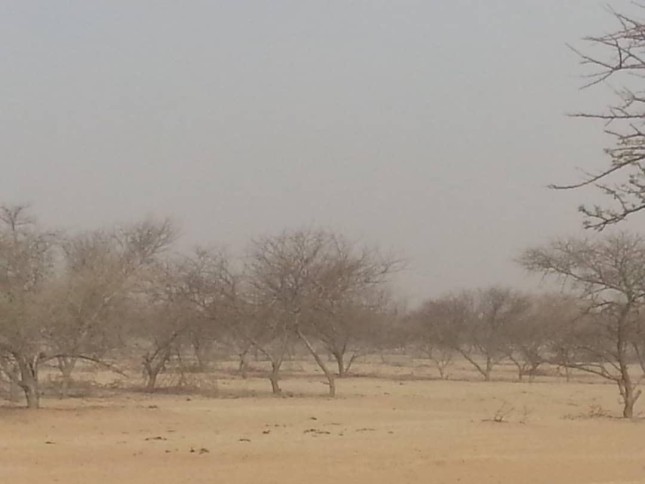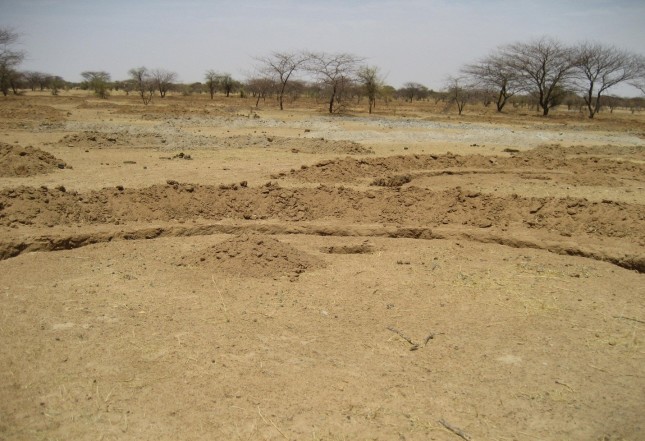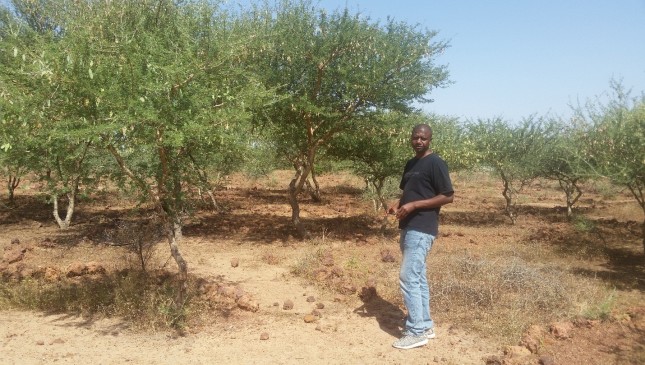-
How Gum Acacia Trees Could Help Build Peace in the Sahel
March 30, 2020 By Ousseyni Kalilou
A special type of tree could facilitate peacebuilding in the Sahel. A stretch of semi-arid land south of the Sahara that runs from the Red Sea to the Atlantic Ocean through 10 countries (Eritrea, Sudan, Chad, Niger, Nigeria, Burkina Faso, Mali, Algeria, Mauritania, and Senegal). But the western subregion covering the Lake Chad area (the intersection of Chad, Cameroon, Nigeria, and Niger) and Liptako-Gourma (the tri-border zone of Burkina Faso, Mali, and Niger) in the Sahel has been the scene of a growing humanitarian crisis. Armed groups are terrorizing local populations. Rampant insecurity has forced 1 million people to flee their homes. People have been cut off from their livelihoods. Food insecurity is worsening. Casualties continue to mount. And climate change will likely exacerbate conditions, forcing more people to compete for depleted forest resources and land. More food shortages and instability will surely follow.
Yet although life is hard for humans in the Sahel, the soil and harsh climate of the zone, also known as “the gum belt,” is hospitable to Acacia Senegal, the best quality gum arabic tree. This type of acacia tree is hardy. It can survive in places with 11 months of drought. It also offers many ecological advantages, economic benefits, and social opportunities. Its sap is the gum arabic, which was once bought and sold when pharaohs ruled Egypt. Now, a derivative of the gum arabic known as E414 is used as an emulsifier in sodas, a thickener in candies, a binder in inks and drugs, and a foam stabilizer in beer. When I conducted field research for my graduate thesis, Understanding How Climate Mitigation Through Gum Arabic Production May Lower the Levels of Violent Conflicts in the Sahel, I made several discoveries.
Increasing Environmental Security
The gum arabic tree could enhance Sahel’s environmental security. The acacia gum tree is among the nitrogen fixing trees (NFTs) that absorb the gas from the atmosphere and transform it in the soil into nitrogen that other plants depend on. Such trees are therefore valuable natural fertilizers. The roots of these trees spread wide and deep in the ground, and that makes them extremely resistant to drought, helping protect soil from desertification and land erosion. This ability to create a hospitable environment for other species makes the acacia a pioneer in barren areas. That is, once planted, the acacia facilitates the growth of other plants in its surroundings.
In Niger, agronomists, use the tree’s ecological advantages for sustainable land management (SLM). The recuperation and the greening of the land decreases underlying problems of violence in a region where more than 80 percent of the population survives on what nature provides. When I visited the bio-carbon initiative of Programme d’Actions Communautaires (Community Action Program, or PAC) in the village of Tchida, I learned how gum arabic trees can help make land more usable. After gum arabic trees were planted, using the sustainable land management technique of half-moons (see below) to prevent the water and the soil nutrients from running off, the program succeeded in restoring the area in an affordable, practical, and effective way.


Fostering Food Security and Water Security
As basic as it may sound, planting as many acacia trees as possible helps reestablish the Sahel’s biodiversity and assure water security. Planting more acacia trees can improve the pluvial, or rainy, season and make more water available for pastures. Through evapotranspiration, trees absorb water from the ground and emit it into the air as vapor, which becomes liquid-generating clouds. Trees and forests also attract moisture from the sea through a biotic pump mechanism. By sustaining clouds, trees contribute to rainfalls, which improve the water supply and vegetation for human and livestock. Trees, and especially the acacia trees (as previously discussed), prevent water from running off and facilitate its infiltration to enhance the groundwater needed to grow food and ensure an adequate supply of surface water. Consequently, the intercommunal clashes over water scarcity may decrease. And animals, which everyone assumed had disappeared, were spotted back in the wild. In Niger, specialists in agroforestry use the technique of intercropping (planting the gum tree along with other staples) in the farms to increase the productivity of the land. That practice may prevent the loss of agricultural land.
Reducing Poverty
Gum arabic trees also improve economic security and social security. I discovered that villagers put aside differences to work together, exchange ideas, and build social cohesion around the gum arabic tree.
Economically, the gum is a promising commodity nationally because it is the source of an additive or emulsifier that multinational companies highly covet. At the local level, a rudimentary trade exists between animal herders and women who handpick the resin, or nuggets of hardened acacia tree sap, and the middlemen who come weekly to the traditional markets to buy the product.
The gum arabic tree aligns with a household livelihood strategy. As the village inhabitants exhaust household coping strategies, they are turning to non-farm activities, such as mining, which in turn are damaging the environment. When villagers collect the resin instead, they can increase their buying power and diminish their dependence on other environmentally less savory activities for survival.
As the efforts at afforestation, or planting gum arabic trees where none were before, are made, they foster intra and intercommunity exchanges with the collaboration of the private sector, the international community, and the local government. In the village of Tchida, I found that the trees have potential as tools for environmental peacebuilding. That is, when different stakeholders collaborate around the Acacia Senegal to protect and improve the environment, their efforts may lead to a sustainable peace in the region, because their work helps tackle the underlying problems of violent conflicts.
That’s a best-case scenario. However, another scenario is possible. If gum arabic production is modernized, and people come to see the land as a resource of value, land grabbing could follow. Foreign businesses or national elites could buy or lease fertile lands, leaving the poor landless. The clique at the top of the social hierarchy could profit to the detriment of the most vulnerable. The unwanted consequences of well-intentioned investment in gum arabic production may lead to frustration, which may create more violence. Instead, local governments and external partners must put more effort into planting as many gum arabic trees as possible in farms and in the wild and restructuring the commercialization of the gum arabic resin by cutting out the middlemen, so that the resin collectors can sell directly to businesses connected to the global market. This will protect and improve the environment, and enhance the livelihood coping strategy of the poor who may sell the resin at higher prices.
Ousseyni Kalilou is a co-chair of the Forest Interest Group at the Environmental Peacebuilding Association (EnPAX). He received the EnPAx’s 2019 Environmental Peacebuilding Award for Best Student Paper.
Sources: Baltimore Sun, Desertification, Evergreen Agriculture Partnership, Feedipedia, Food and Agriculture Organization of the UN, GeoJournal, Planetary Security Initiative, The Guardian, UN News, World Population Review.
Lead Photo Credit: An acacia field in the Diffa region of Niger is parched due to climate change. Photo used with permission, courtesy of ADDAX Niger.
 A Publication of the Stimson Center.
A Publication of the Stimson Center.





